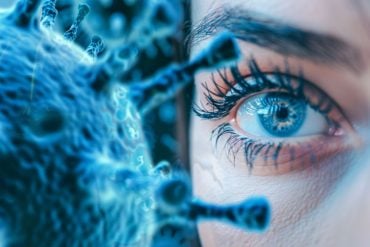Summary: Researchers unveiled a groundbreaking discovery in brain chemistry.
They identified wave-like patterns of the neurochemical acetylcholine in the striatum, a region vital for motivating actions. This comes after similar patterns were found in dopamine, another crucial neurochemical in the same region.
The study not only illuminates the delicate balance between these neurochemicals but also proposes a revolutionary interaction model that may provide insights into movement disorders.
Key Facts:
- Pioneering Discovery: This is the first-ever description of wave-like patterns of acetylcholine in the striatum of healthy behaving animals.
- Singular Trigger: Activation of just one acetylcholine-releasing neuron can induce local dopamine release.
- Novel Interaction Model: The research introduces a new mathematical model explaining the simultaneous generation of both acetylcholine and dopamine waves, challenging traditional beliefs about neuronal interactions.
Source: Hebrew University of Jerusalem
In a new study, a group of researchers, led by Dr. Joshua Goldberg from the Hebrew University, describe a new kind of neurochemical wave in the brain.
Their research, published in Nature Communications, unveils the existence of traveling waves of the neurochemical acetylcholine in the striatum, a region of the brain responsible for motivating actions and habitual behaviors.

The motivation to execute an action is widely thought to depend on the release of the another neurochemical, dopamine, in the striatum. Recent research has shown that dopamine is released in wave-like patterns within the striatum.
The team led by Goldberg discovered that acetylcholine is also released in the striatum in wave-like patterns. It has long been thought that in order for the striatum to function properly a balance needs to be maintained between dopamine and acetylcholine release in the striatum, and that the disruption of this balance leads to movement disorders such as Parkinson’s disease.
The new study proposes a mathematical mechanism by which simultaneous waves of acetylcholine and dopamine arise, which may represent how this balance is realized.
The research was conducted using state-of-the-art genetic tools and advanced imaging techniques, allowing the team to visualize the acetylcholine waves in awake, behaving animals. Additionally, imaging techniques were employed to observe the interaction between acetylcholine and dopamine in vitro.
Through a rigorous mathematical analysis, using reaction-diffusion activator-inhibitor models and computer simulations, the team proposed a model that explains the formation of both acetylcholine (the activator) and dopamine (the inhibitor) traveling waves.
Key Highlights of the Study:
First description of acetylcholine waves: in the striatum of healthy behaving animals.
Local Dopamine Release is Triggered by individual non-dopamine neurons: The study demonstrated that electrical activation of a single acetylcholine-releasing neuron in the striatum is sufficient to induce local dopamine release in its proximity.
A novel model for how the two neurochemical waves arise simultaneously : The study proposes a novel mathematical model based on the known interaction between acetylcholine and dopamine in the striatum, that can give rise to the simultaneous generation of these waves.
Finally, the study provides strong testable predictions about the relationship between these two wave phenomena and the neural mechanism for their formation.
The study also proposes that dopamine and acetylcholine axons (which are the very long appendages of the dopamine and acetylcholine neurons) interact directly and locally in the striatum, which is not how neurons are traditionally thought to interact.
About this neuroscience research news
Author: Danae Marx
Source: Hebrew University of Jerusalem
Contact: Danae Marx – Hebrew University of Jerusalem
Image: The image is credited to Neuroscience News
Original Research: Open access.
“Acetylcholine waves and dopamine release in the striatum” by Joshua Goldberg et al. Neuroscience News
Abstract
Acetylcholine waves and dopamine release in the striatum
Striatal dopamine encodes reward, with recent work showing that dopamine release occurs in spatiotemporal waves. However, the mechanism of dopamine waves is unknown.
Here we report that acetylcholine release in mouse striatum also exhibits wave activity, and that the spatial scale of striatal dopamine release is extended by nicotinic acetylcholine receptors.
Based on these findings, and on our demonstration that single cholinergic interneurons can induce dopamine release, we hypothesized that the local reciprocal interaction between cholinergic interneurons and dopamine axons suffices to drive endogenous traveling waves.
We show that the morphological and physiological properties of cholinergic interneuron – dopamine axon interactions can be modeled as a reaction-diffusion system that gives rise to traveling waves.
Analytically-tractable versions of the model show that the structure and the nature of propagation of acetylcholine and dopamine traveling waves depend on their coupling, and that traveling waves can give rise to empirically observed correlations between these signals.
Thus, our study provides evidence for striatal acetylcholine waves in vivo, and proposes a testable theoretical framework that predicts that the observed dopamine and acetylcholine waves are strongly coupled phenomena.






